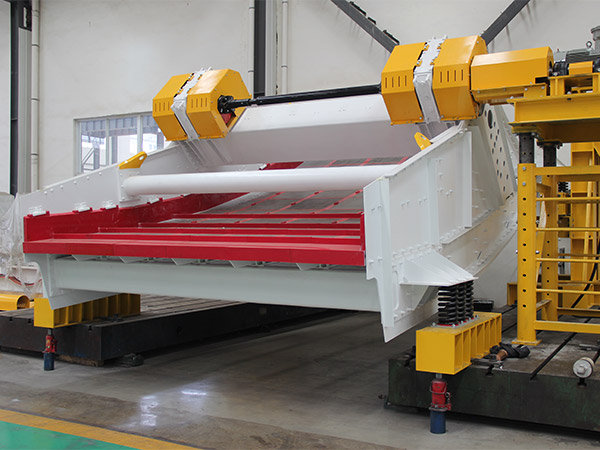How does the vibrating screen screen different materials?
When purchasing a vibrating screen, users will pay more attention to the cost performance, such as screening effect, function, etc., whether the price is reasonable, they are more concerned about. Generally, vibrating screens are sometimes dedicated and can only screen one material. However, for current production, how to screen multiple materials has become a trend, that is, to realize that one vibrating screen equipment can screen different shapes, Materials with particle size and characteristics are screened.
How to screen a variety of materials with a vibrating screen

1. Change the vibrating screen amplitude
To realize the screening of a variety of materials by the vibrating screen, the amplitude of the vibrating screen can be changed according to the characteristics of the material. To make the vibrating screen achieve better screening results for materials with different properties, the amplitude of the vibrating screen needs to be adjusted accordingly , Because different materials have different shapes due to molecular structure, so the requirements for amplitude are also different.
For example, materials with relatively heavy specific gravity and good fluidity are suitable for screening with low amplitude, while materials with poor fluidity generally require high amplitude to achieve better screening results.
2. Replace the vibrating screen
The particle size of the material varies greatly according to the shape and type. Therefore, to realize the screening of a variety of materials by the vibrating screen, it is necessary to realize the variability of the mesh number of the screen. The simpler method is to buy multiple screens of different meshes from the vibrating screen manufacturer or a nearby manufacturer, and manually replace the screens as required to achieve screening of a variety of materials.

It is worth noting that the screen is the part of the vibrating screen equipment directly in contact with the material, and it is an important guarantee for determining the accuracy of the screening of the material and the output value. However, many users often find that the screen is broken. It is recommended that users should pay attention to the equipment operation: the oscillation force should not be too large, and it should be within the range of the equipment, and the feeding amount should not be too large to prevent the screen from breaking. .
In addition, the quality of the screen is affected by the choice of material, the thickness of the warp, and the placement of the warp and weft during weaving. Therefore, a good supplier should be selected when selecting related accessories.
3. Adjust the vibrating force of the vibrating screen
To screen a variety of materials, the other is to adjust the vibrating force of the vibrating screen according to the output requirements and the difficulty of sieving the materials. The adjustment of the vibrating force of the vibrating screen is mainly achieved by changing the angle of the upper and lower weights of the vibrating motor. The reason for changing the vibrating force is that the stickiness, water content, and specific gravity of the material are closely related to the sieving rate, and the output of two different materials on the same equipment is also quite different.
Therefore, when sieving materials that are difficult to pass through, it is necessary to increase the vibrating force to ensure a certain production efficiency, and when sieving materials with a higher sieving rate, the vibrating force can be reduced to reduce unnecessary energy. Waste. The size of the vibrating screen force is not only related to the type of material, but also closely related to and proportional to the number of screen meshes, that is, the larger the mesh number requirement, the more suitable a larger vibrating screen force.
The above is the answer and analysis of how the vibrating screen sieving a variety of materials. It is mainly possible to change the vibrating screen amplitude according to the characteristics of the material, replace the screen and adjust the vibrating screen force according to the difficulty of sieving the material. It can be seen from these several methods that if you want to screen a variety of materials, the key lies in the diversified adjustment of the vibrating screen’s amplitude, screen, and excitation force to achieve the variability of these three parameters.



